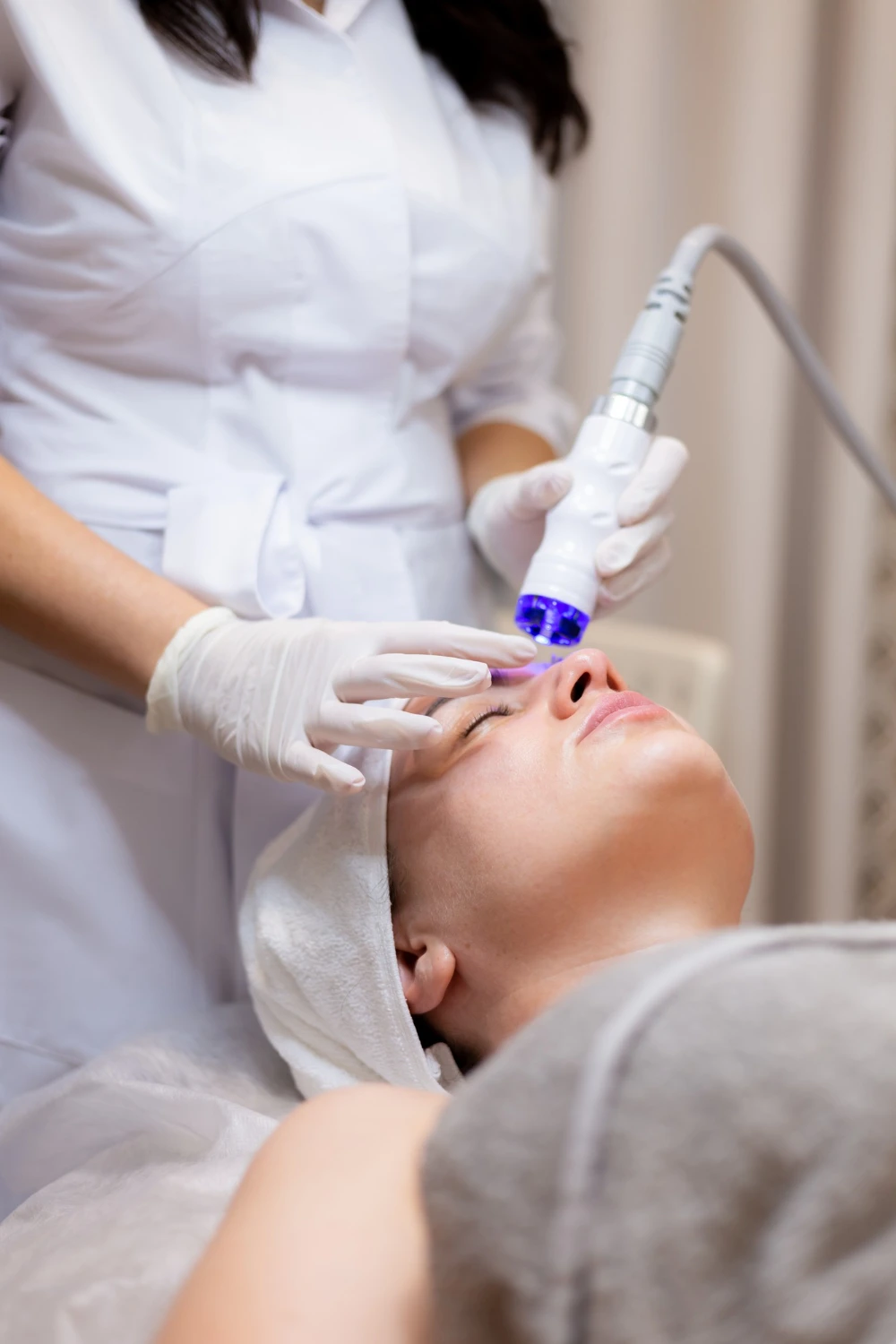Laser hair removal has gained immense popularity as a long-term solution for unwanted hair. Traditionally, the best results were seen in individuals with dark hair and light skin due to the technology’s reliance on melanin absorption. However, recent advancements have expanded the efficacy of laser hair removal to include individuals with light and blonde hair.
This article delves into the nuances of laser hair removal for light and blonde hair, providing a thorough understanding of the science, technology, preparation, aftercare, risks, and more.
The Science Behind Laser Hair Removal
Laser hair removal relies on the principle of selective photothermolysis, where specific wavelengths of light are absorbed by melanin in the hair, converting light energy into heat to destroy hair follicles.
1. Melanin and Hair Color
Dark hair: It contains high levels of melanin, making it an ideal target for laser treatments.
Light and blonde hair: Contains less eumelanin and more pheomelanin, which absorbs laser light less effectively, posing a challenge for traditional lasers.
2. Technology Advancements
Newer lasers have been developed to address these challenges. These technologies use various wavelengths and techniques to improve the absorption of light by lighter hair. Techniques such as using lower energy levels with longer pulse durations or combining laser treatments with topical agents that enhance melanin can improve efficacy.
TYPES OF LASERS USED FOR LIGHT AND BLONDE HAIR
There are several different types of lasers used:
1. Nd Laser
Wavelength: 1064 nm
Mechanism: Penetrates deeper into the skin, bypassing superficial melanin and targeting hair follicles at the root level.
Benefits: Suitable for a broader range of skin tones, including darker skin, but less effective for very light hair unless combined with other treatments.
2. Alexandrite Laser
Wavelength: 755 nm
Mechanism: Offers a good balance of melanin absorption and skin penetration.
Benefits: Effective for a wide range of hair colors, including blonde, when used with appropriate settings.
3. Diode Laser
Wavelength: 800-810 nm
Mechanism: Provides deep penetration and customizable settings to target various hair and skin types.
Benefits: Versatile and effective for lighter hair when the settings are adjusted to optimize absorption.
Challenges of Laser Hair Removal on Light and Blonde Hair
The effectiveness of laser hair removal on light and blonde hair presents several challenges due to the intrinsic properties of lighter hair. Here, we explore these challenges in greater detail:
1. Melanin Deficiency
Lower melanin content: Light and blonde hair have significantly less melanin compared to darker hair. Melanin is the primary target for the laser’s energy. Less melanin means the laser has a harder time locating and destroying the hair follicle, leading to reduced efficacy.
Pheomelanin vs. Eumelanin: Light and blonde hair predominantly contain pheomelanin, which absorbs laser light less efficiently than eumelanin, the pigment found in darker hair. This makes it more difficult for the laser to generate the necessary heat to destroy the hair follicle.
2. Precise Targeting Requirements
Need for precision: Lighter hair requires more precise targeting since there is less pigment to attract the laser. This precision necessitates advanced technology and highly skilled practitioners to ensure the laser accurately targets the hair follicles without damaging the surrounding skin.
Laser settings: Adjusting the laser settings, such as using lower energy levels with longer pulse durations, is critical for treating light and blonde hair. These settings help to minimize skin damage while attempting to achieve effective hair reduction.
3. Multiple Sessions
Increased number of sessions: Due to the challenges in effectively targeting light hair, individuals with light and blonde hair often require more treatment sessions to achieve the desired results. While darker hair may respond well to 6-8 sessions, lighter hair might need 10-12 or more sessions.
Gradual improvement: The results may be more gradual compared to those with darker hair, necessitating patience and commitment to the treatment plan.


4. Hair and Skin Type Variability
Individual differences: The variability in hair and skin types among individuals with light hair further complicates treatment. Some people may have light hair but still possess enough melanin for the laser to work effectively, while others may have extremely light hair with minimal melanin, requiring alternative approaches.
Skin type considerations: Lighter hair is often found in individuals with fair skin, which is generally more sensitive. This sensitivity requires careful handling and precise laser settings to avoid adverse reactions like burns or hyperpigmentation.
5. Technological Limitations
Dependence on advanced lasers: Not all laser systems are equally effective on light hair. Newer technologies, such as Nd, Alexandrite, and Diode lasers, have been developed to target lighter hair more effectively, but these systems are not always available in all clinics.
Cost and availability: Advanced laser technologies and the need for multiple sessions can make treatment more expensive and less accessible to some individuals.
Preparation for Laser Hair Removal
These are must-follow preparation steps for laser hair removal.
1. Consultation
A thorough consultation with a certified laser technician or dermatologist is essential. This helps to assess your skin type, hair color, and medical history to tailor the treatment plan. A patch test is often conducted to determine how your skin and hair react to the laser and to optimize the settings for your specific needs.
1. Pre-Treatment Care
Stay out of the sun and avoid tanning for at least two weeks before the procedure, as tanned skin can increase the risk of side effects. Plus, shave the treatment area 24-48 hours before the session. This allows the laser to target the hair follicle directly without burning surface hair.
Avoid waxing, threading, plucking, or using depilatory creams for at least six weeks before treatment, as these methods remove the hair root, which is necessary for the laser to work effectively.
Aftercare and Maintenance
Make sure to take follow-up sessions and do an aftercare post taking your laser wax removal sitting.
1. Immediate Post-Treatment Care
Apply cooling gels, aloe vera, or ice packs to the treated area to soothe any redness or swelling. Also, protect your skin from the sun using high-SPF sunscreen and avoiding direct sunlight for at least a week post-treatment.
2 Long-Term Care
Typically, follow-up sessions are scheduled every 4-6 weeks. The total number of sessions varies, but generally, 6-8 sessions are needed for optimal results. For skin care, use gentle skin care products and avoid exfoliants or harsh chemicals for a few days after each session.
3 Maintenance Treatments
Periodic maintenance treatments, usually once a year, may be necessary to maintain the results, especially since new hair follicles can become active over time.
Risks and Side Effects
Laser wax removal also imposes several risks and side effects as below:
1. Common Side Effects
- Redness and swelling: These are common immediately after treatment and typically subside within a few hours to a few days.
- Mild discomfort: Some individuals experience a mild stinging or snapping sensation during the treatment.
2. Rare Complications
- Burns and blisters: These can occur if the laser settings are too high or if the procedure is not performed correctly.
- Scarring and pigment changes: Improper treatment can lead to hyperpigmentation (darkening) or hypopigmentation (lightening) of the skin.
- Paradoxical hypertrichosis: A rare condition where treated hair grows back thicker or darker.
FAQs
Is laser hair removal permanent?
Laser hair removal offers long-term hair reduction rather than permanent removal. Maintenance sessions are typically needed to keep hair growth at bay.
How many sessions are needed for laser hair removal on light hair?
Individuals with light and blonde hair often require more treatment sessions compared to those with darker hair. While darker hair may respond well to 6-8 sessions, lighter hair might need 10-12 or more sessions for optimal results.
What are the common side effects of laser hair removal?
Common side effects include temporary redness, swelling, and mild discomfort immediately after treatment. However, severe reactions such as burns, blisters, or pigment changes are rare but possible and should be reported to your provider immediately.



